The great and terrible day of the Lord - the Wenhaston Doom
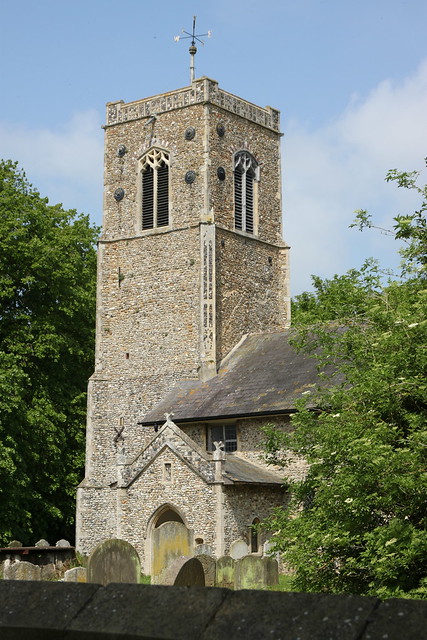
Wenhaston is a small and rather ordinary village about three or four miles inland from Southwold on the Suffolk coast. It's church is a fairly ordinary building, rather heavily restored in the 1892 and with the old parish constable's handcuffs and shackles hanging up in its vestry, as you do!

Had it not been for the restoration in 1892, the extraordinary treasure that makes this church worth visiting, would not have been revealed at all. As part of the 1892 restoration the architect decided to insert a new timber chancel arch into the church and this necessitated removing the whitewashed timber planking covered in the royal arms and old-fashioned Godly texts, that filled up the upper space where the chancel screen once divided the Nave from the Chancel. This infilling was removed plank by plank and thrown into the churchyard, no doubt ready to be burnt or recycled. Overnight it rained, the whitewash started to dissolve, and bits of colour began to peep through. Someone clearly recognised that what was being revealed was important and after the remainder of the whitewash was removed, gradually a medieval panel painting was revealed.
The planks were the timbers of a Tympanum, on which was painted a Doom or Last Judgement, a portrayal of the 'great and terrible day of the Lord'. This narrative scene formed the backdrop to the great Rood cross, for there in unpainted outline, as at Llanelieu, is the shape of the Rood and the attendant figures of Mary and John. These were presumably three-dimensional and were removed in the mid sixteenth century to be replaced with a painting coat of arms much like that painted on the Tympanum at Tivetshall St Margaret in Norfolk. The lost Rood was evidently a cross raguly, for you can see the outline of the cut off branches of the tree. The combination of the images of Doom and Rood so closely in conjunction, a consequence of the lack of space in this small church, is both theologically rather striking and in the minds of the medieval people who viewed the image must have considerable symbolic power.
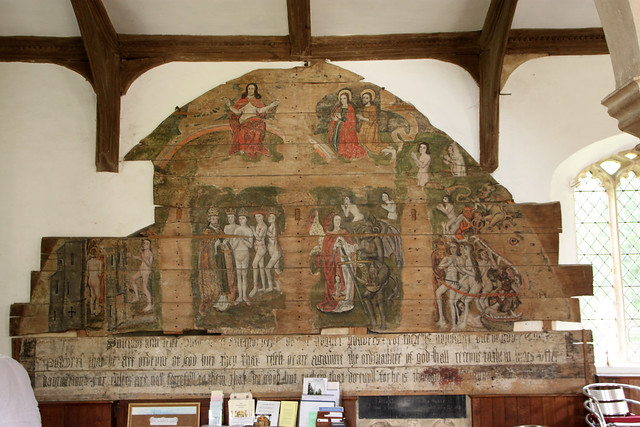
The restored Doom Tympanum was returned to the church and was helpfully placed in the north aisle at low level, so it can be examined in great detail and we can see it's different elements.
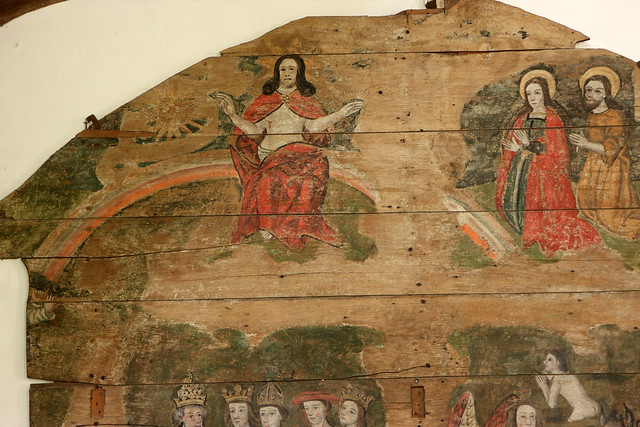 Due to the position of the Rood and the figures of Mary and John, the narrative of the Doom has been broken up by the painter into individual scenes around the shadow of these lost figures. In the top left hand quadrant formed by the Rood is Christ appearing in Majesty, sat on a rainbow, the judge the earth. Just below him and near the cross beam is an angel blowing a trumpet, the Last Trump.
Due to the position of the Rood and the figures of Mary and John, the narrative of the Doom has been broken up by the painter into individual scenes around the shadow of these lost figures. In the top left hand quadrant formed by the Rood is Christ appearing in Majesty, sat on a rainbow, the judge the earth. Just below him and near the cross beam is an angel blowing a trumpet, the Last Trump.
On top right quadrant are the Virgin and Mary and St John the Baptist kneeling in prayer. They are praying for the souls of the faithful departed. Behind them you can see the departed rising naked from their graves, though one chap is still wearing his winding sheet.

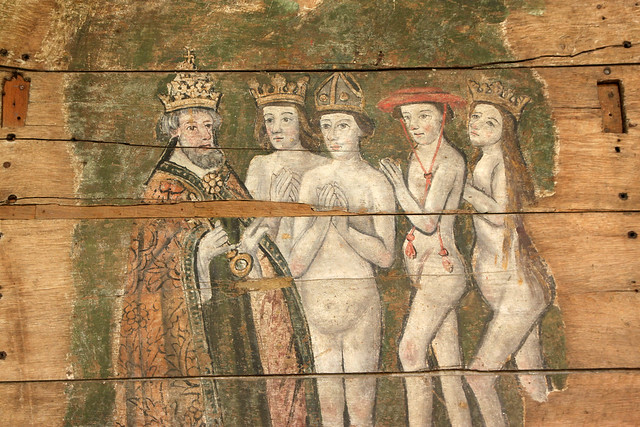
In the bottom left hand quadrant we begin to see what happens to those who are judged worthy of heaven. St Peter, recognisable because he is dressed as a pope and has the key to the gate of heaven, is having a chat with four of the saved before letting them in. These four naked figures are a somewhat unlikely crowd: a king, a bishop, a cardinal and queen. A clear message here, if they can be saved, there is potential for anyone. Further to the left is the gate of heaven and a couple of lucky souls entering to enjoy their eternal reward.
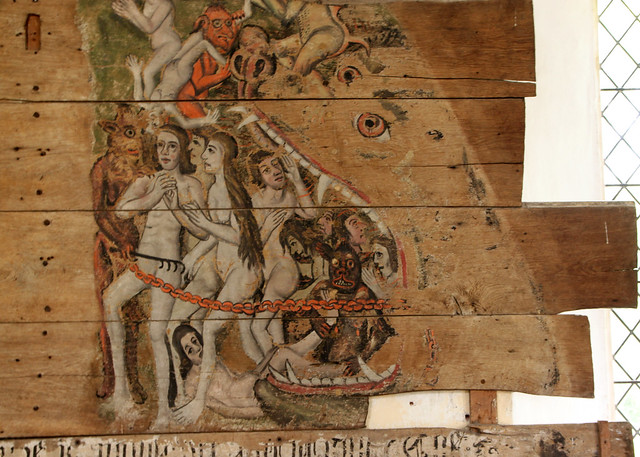
Now if we go to the far right hand side of the Tympanum, we look upon the fate of the damned. A group of naked souls are being dragged by demons, with grappling hooks and a red hot chain into hell, where as Jesus says in Matthew's Gospel there is 'wailing and gnashing of teeth'. Literally gnashing of teeth here, for hell is portrayed as a great consuming monster, its mouth wide its teeth and fangs bare. Inside the great mouth of hell are the faces of tortured souls pleading for mercy.
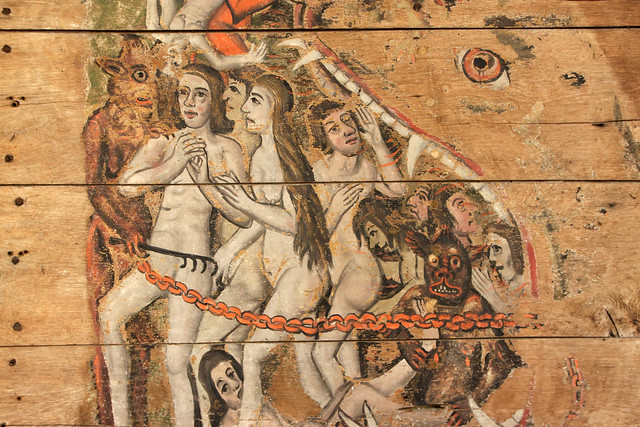
The Doom Tympanum here is late and was perhaps painted c,1500-1510. There was a marked degeneration in the quality of painting in England in this period, both panel painting and in stained glass and the work here is a typical product of the time. Though it has an early Tudor rusticity and charm about it, it was a top quality work, the rusticity belies the fact that it was an expensive commission, using costly pigments. What a joy it is and what a delight to be able to examine it at close quarters.

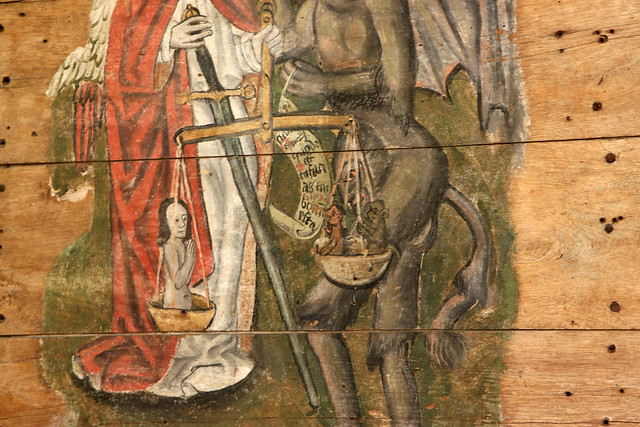

Comments